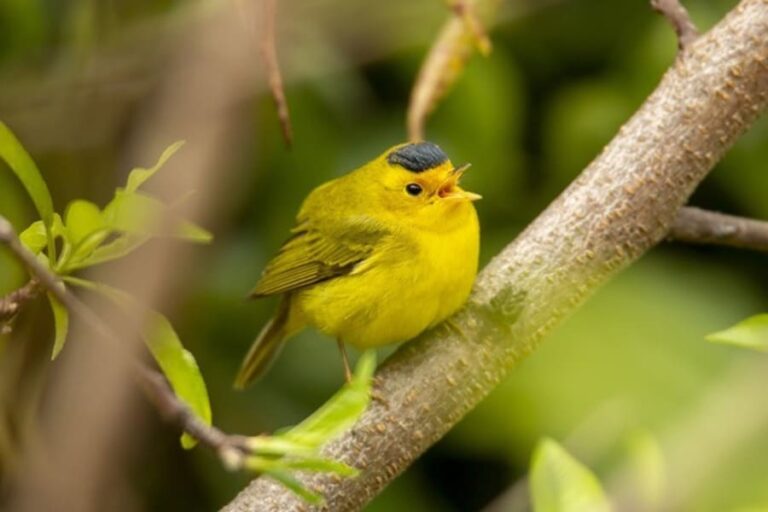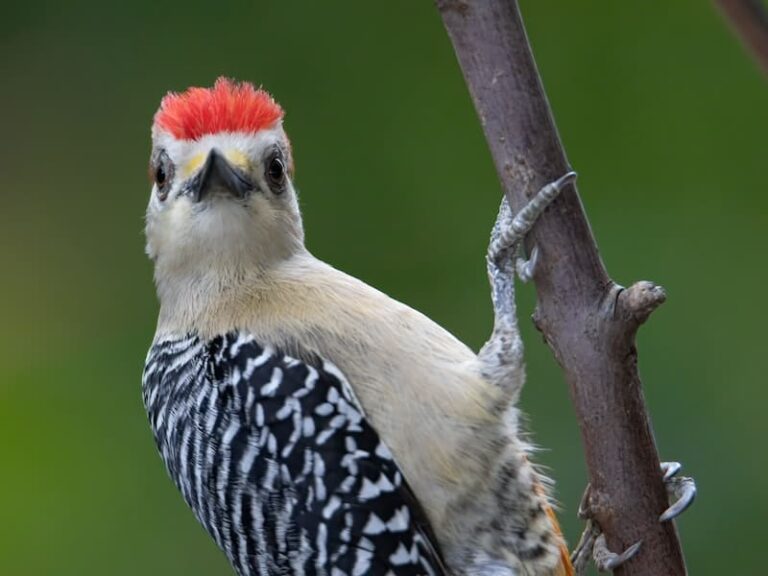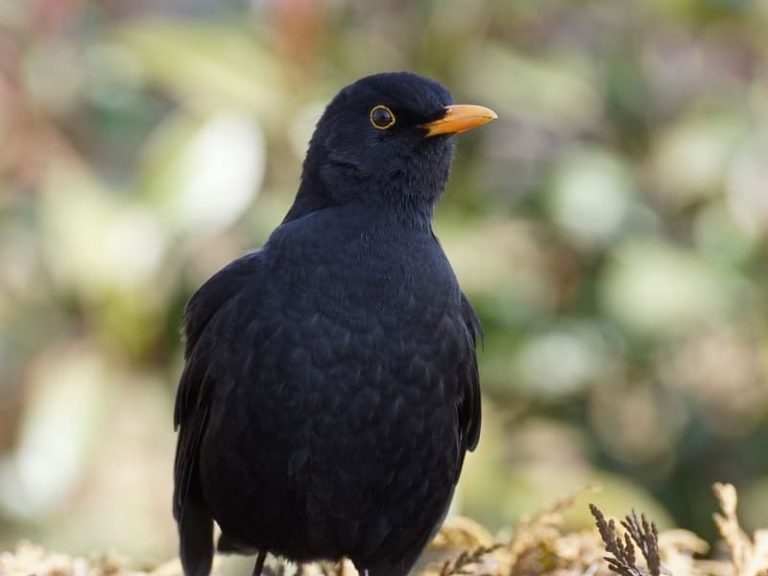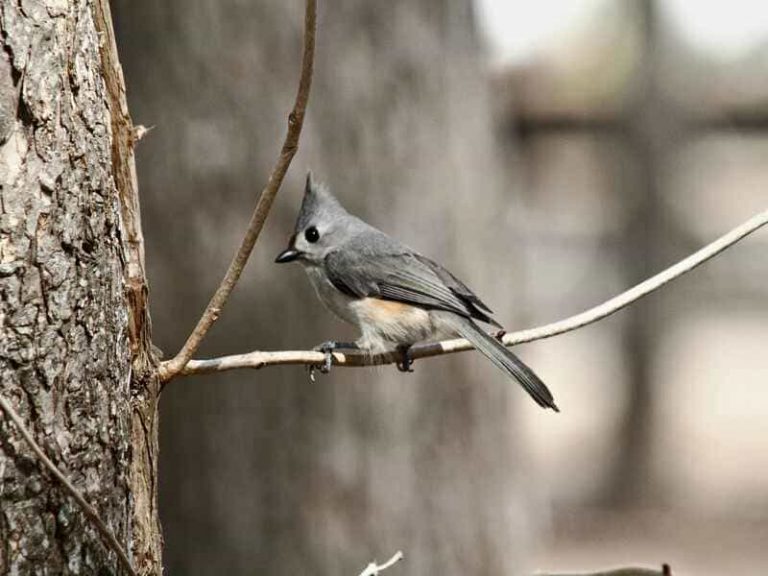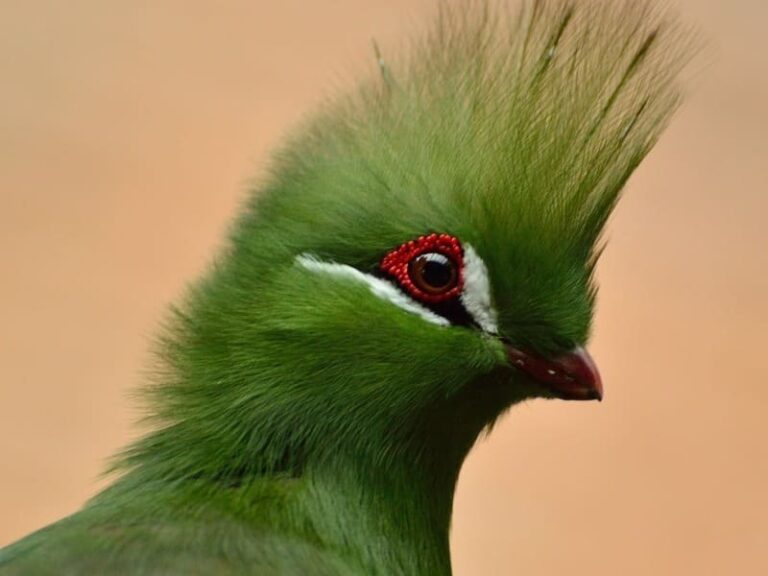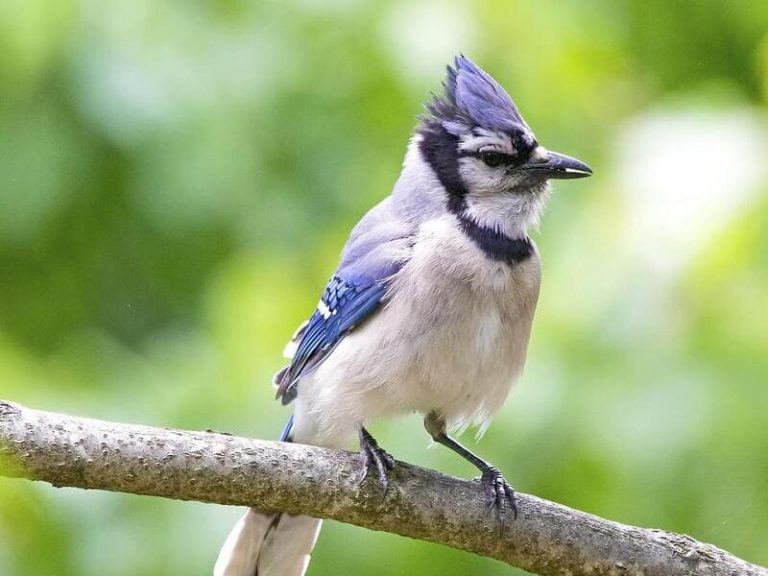Do Birds Eat Grasshoppers? (Which birds and how to control)
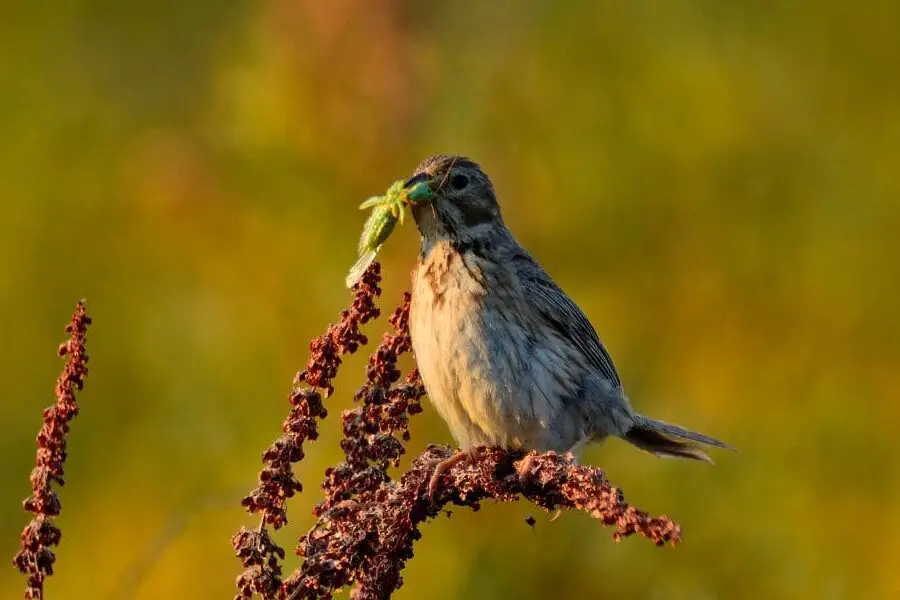
Have you ever heard a loud, irritating chirping sound coming from your backyard and wondered what it was? Chances are it’s a grasshopper!
These pesky little bugs often cause us frustration as they creep around our yards but did you know that some birds actually feed on them?
In this blog post, we’ll explore the answer to the question: do birds eat grasshoppers? We’ll cover all aspects of this topic, including the types of birds most likely to snack on these insects and their preferred habitats.
With some insight into this behavior, maybe next time there’s a chirp in your yard, you’ll be prepared!
Do Birds Eat Grasshoppers?
Birds have an impressive selection of foods they can dine on, but do they opt for grasshoppers? While some birds may occasionally sample this insect, it is generally not a preferred food.
A majority of birds subsist primarily on seeds and grain as a stable food source. For example, ground-dwelling sparrows scavenge plant matter to eat, rarely competing for insects with other bird species.
On the other hand, some birds of prey that hunt in large open areas will snack on grasshoppers from time to time. However, even when offered hard-bodied insects like grasshoppers, these birds usually favor soft-bodied varieties such as caterpillars or termites instead.
So while birds may occasionally nibble on grasshoppers here and there, this is usually not an essential part of their diet.
Tips to Get Rid of Grasshoppers
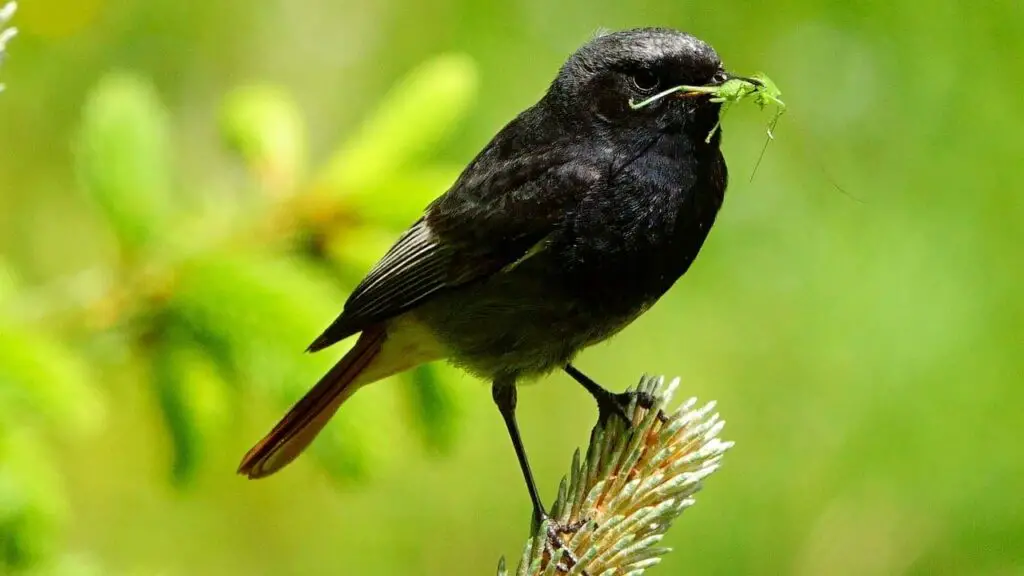
If you’re looking for the best tips to get rid of pesky grasshoppers, look no further. In most cases, spraying your plants with a chemical insecticide will do the job of killing adult grasshoppers; however, if you don’t want to use chemical pest control products, there are plenty of natural techniques which can also be effective.
For example, introducing natural predators like lacewings and ladybugs into affected areas helps reduce the number of grasshoppers without using any harmful substances.
Additionally, removing weeds and tall or dry vegetation from your property will deprive them of hiding places and their food source, making it less likely for them to settle in your area.
A well-kept garden is one of the best preventative measures against grasshoppers as they limit their habitat!
Cover vulnerable plants
One of the most effective ways to get rid of grasshoppers is to cover the plants they are likely to target.
Covering vulnerable plants in a home garden will create a barrier between them and allow them protection from any grasshopper attempts at eating their foliage.
This can be done by covering young, vulnerable vegetable plants with netting or cloth, as well as planting sacrificial crops such as French marigolds amongst the more valued vegetables to draw away attention from land-hopping pests.
Additionally, using row covers in the early stages of growth can ensure the healthiest harvest yields possible. Grasshoppers may cause damage on an individual basis, but with strategic protective measures, you’ll be able to rid yourself of their presence in no time!
Apply flour to plants
Applying flour to plants is a great way to get rid of grasshoppers. It is a natural and inexpensive solution that can convince grasshoppers to stay away from your garden or yard. Simply spread flour over the ground around susceptible plants, and voilà, you’re done!
This technique works because the flour confuses the insects due to its powdery consistency, causing them to disorient and leave your precious plants alone.
With this solution in your arsenal, you no longer have to worry about those pesky critters ruining your outdoor oasis. Give it a try today!
Eliminate weeds
Grasshoppers can cause extensive damage to gardens and crops, so homeowners are often eager to get rid of them.
While spraying insecticides may provide short-term relief, the most effective way to dissuade grasshoppers from inhabiting the area is to eliminate their food source.
Weeds are the primary food for these bugs, so regularly removing them from garden beds can substantially decrease the grasshopper population in that area. Hand Weeders, hoes, and the overall neatness of your outdoor space will all make it less appealing for these destructive pests.
Removing weeds yourself is also a much more economical and environmentally friendly method than relying on strong pesticides.
So if you find yourself dealing with an influx of grasshoppers, addressing the weed problem in your yard should be at the top of your list!
Apply garlic spray
If you’re looking for a way to rid your garden of pesky grasshoppers without using harsh chemicals, garlic spray could be the perfect solution.
It’s an effective, safe and natural alternative that can help keep the bugs away from your precious plants and flowers.
Simply mix several crushed cloves of garlic with cooking oil and water, strain the mixture, add it to a spray bottle, and use it to treat areas where grasshoppers have been spotted. With regular applications, you should watch your garden return to its healthy state very soon!
Of course, if you’d rather not make your own garlic spray concoction at home, there are also commercial products available specifically designed to control grasshopper infestations.
Till the ground
Getting rid of grasshoppers can be an arduous task, but with the right techniques, it is definitely possible. One way to do this is to till your garden soil.
When you do this, you disrupt the grasshopper’s environment, making them look for a more hospitable place to call their home.
This simple technique breaks up their opportunity for mating and laying eggs where they were originally located. If successful, you should see later generations of grasshoppers decrease and no longer be an issue in your garden!
Grasshopper Garden Damage
Homeowners who spend summer days in the garden may start to notice emerging damage due to the presence of grasshoppers. These insect pests can devour entire sections of your garden, leaving behind a path of destruction.
Luckily, there are many prevention and control methods available for those looking to reduce grasshopper damage in their gardens.
Techniques such as container traps and natural predators have been used successfully for centuries and can help keep these pesky critters from ruining your nice day out in the garden.
Maintaining beneficial insects like ladybugs, lacewings, and wasps is also an effective way to keep your yard grasshopper-free!
11 Birds That Eat Grasshoppers (with Photos)
Birds are an instrumental part of nature’s insect control, and some species specialize in feasting on grasshoppers. This insect is a popular meal for a variety of avian predators.
The Northern Harrier, more commonly known as the Marsh Hawk, feeds on grasshoppers, among other small prey like voles and rodents.
With their striking white rump and facial disks, these hawks can be easily identified by their distinctive silhouette when they swoop down low to snatch a grasshopper off the ground.
At night they also take advantage of their excellent vision to hunt in twilight and starlight conditions. Not surprisingly, vultures also find grasshoppers palatable.
1. Northern Cardinal
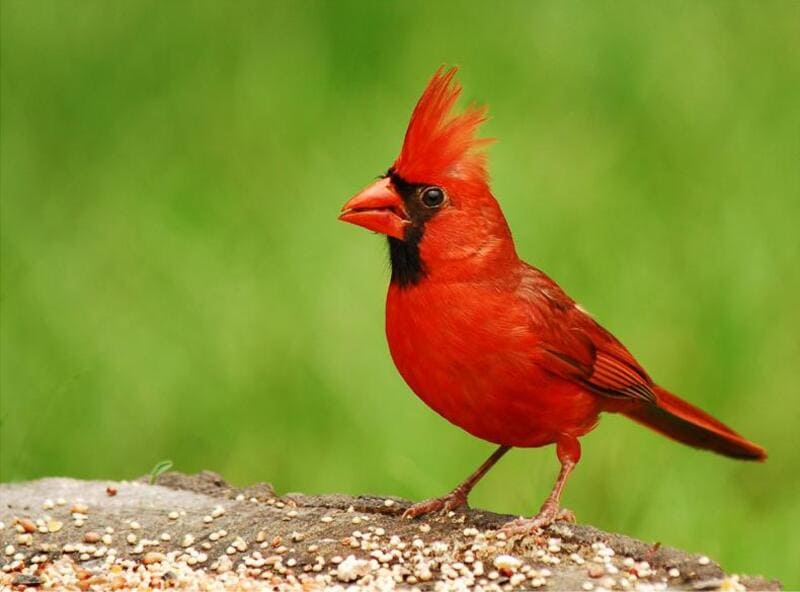
The Northern Cardinal is quickly becoming one of the most beloved birds in North America. Their bright red color makes them easy to find, and they have beautiful melodious songs. A lesser-known aspect of their diet, however, is that they also feed on grasshoppers.
Grasshoppers are a source of important nutrients for cardinals and help them build strong nests and chilly weather winters.
It may seem strange at first, but this dietary habit is quite common during the summer months. Bird watchers will most likely encounter Northern Cardinals feasting on grasshoppers in the late afternoon, just before nightfall comes.
2. Blue Jay
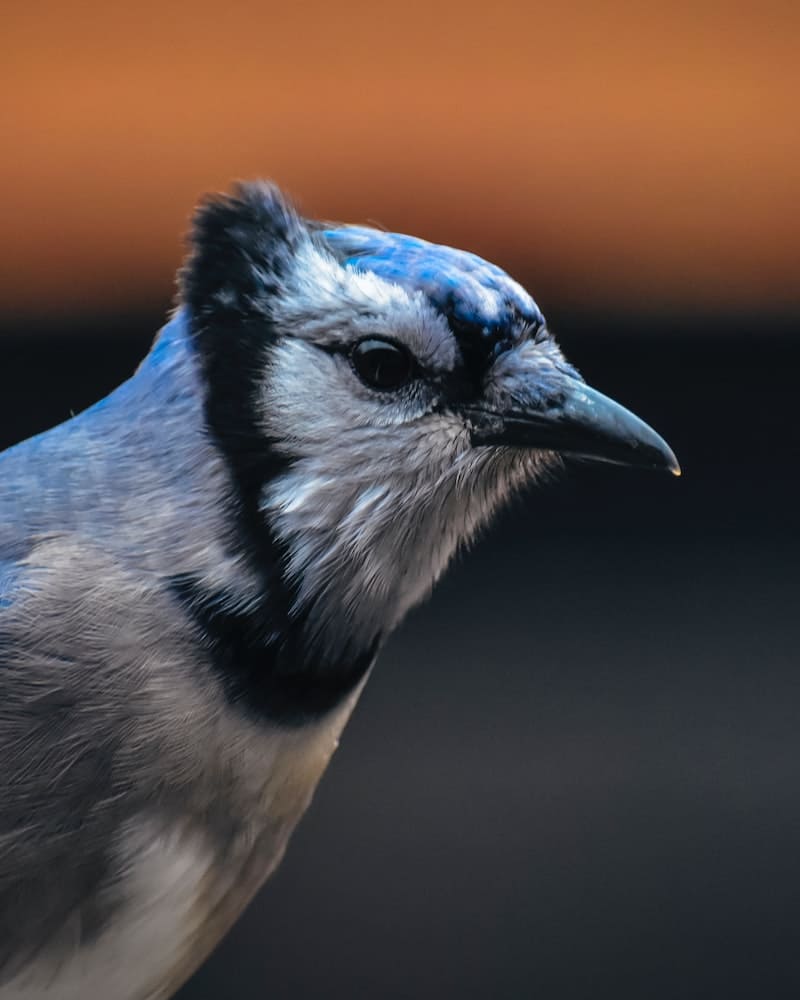
Animals eating other animals is a fascinating part of nature, and the blue jay’s dietary habits are certainly no exception.
These beautiful birds, with their bright feathers and raucous calls, have been observed munching away on grasshoppers!
Blue jays tend to prefer insects for their meals as they are rich in both protein and calories, which is essential for maintaining the bird’s energy levels.
Furthermore, catching prey like grasshoppers also helps to keep their minds sharp as it requires high levels of concentration and agility in order to capture the insect. What an amazing adaptation that shows how brilliantly nature can be!
3. American Crow
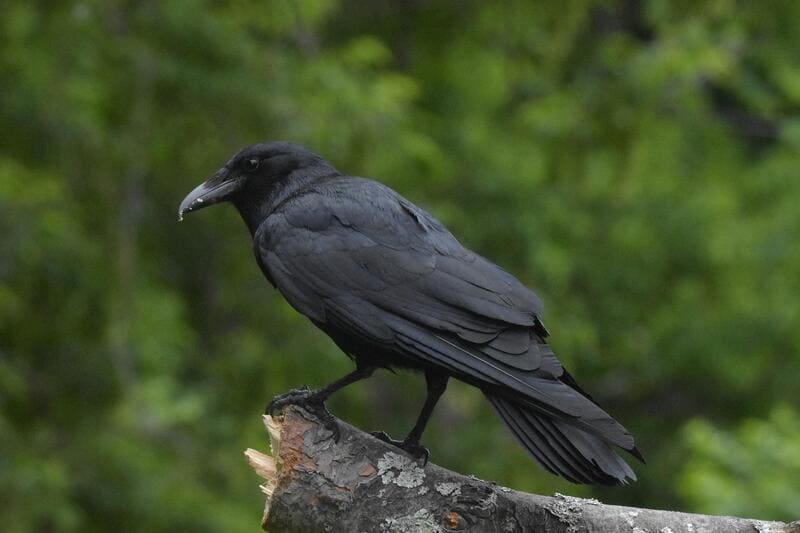
It’s no surprise that American Crows dine on grasshoppers. Many birds in North America enjoy feasting on this crunchy snack, but the American Crow (Corvus brachyrhynchos) is one of its big fans.
These crows are commonly found throughout Canada and the United States, where they can often be seen hopping around, munching away at grasshoppers in fields and other open areas.
Despite being smaller than many of its corvid relatives, such as the raven, it’s still able to take down these large insects thanks to its powerful beak and sharp talons.
4. American Robin
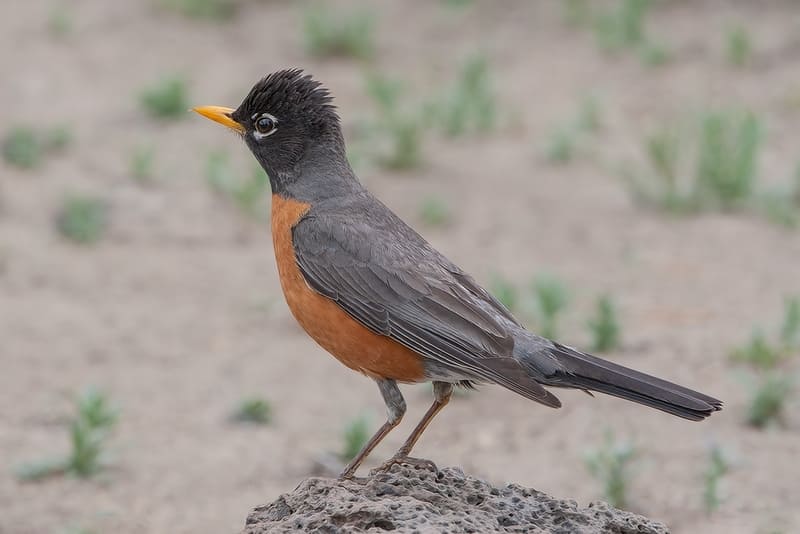
The American Robin is a beloved bird that brightens up our days with its cheerful song. But what many do not know is that the American Robin is actually quite the omnivore, feasting on berries, grubs, and worms, including grasshoppers!
When hunting for food in open fields or lawns, you may spot them snatching out of the air any grasshoppers that venture too close to them.
Though it might be slightly disconcerting to witness such an act of nature in action, it serves as a reminder of how these birds have evolved to best adapt to any potential parameters posed by their environment.
5. Meadowlarks
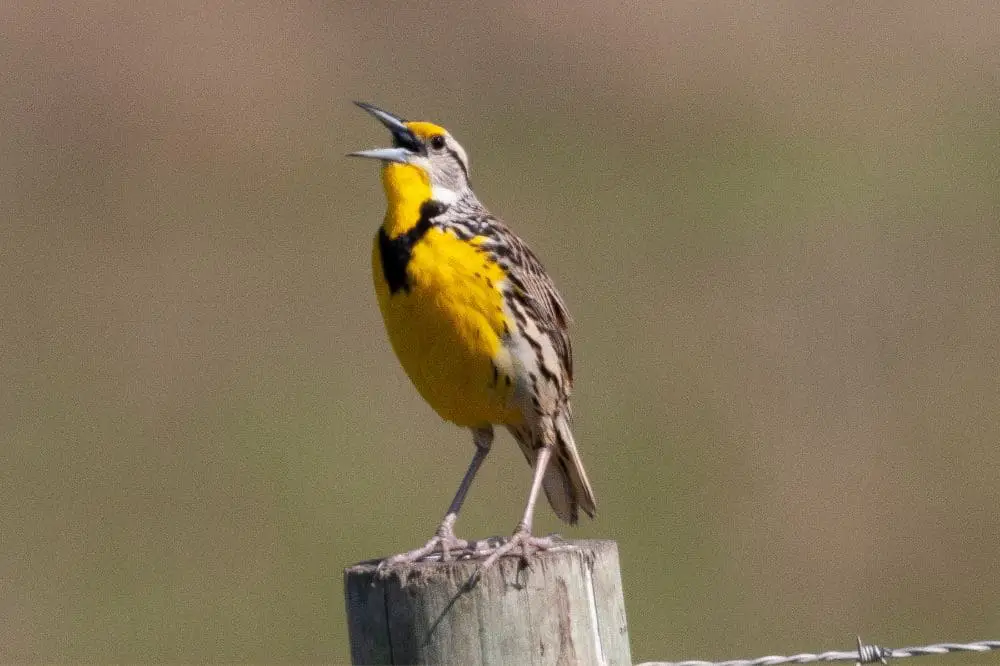
Music of the prairies, and meadowlarks are vibrant birds that call to each other from treetops and fence posts across rural landscapes.
Beyond just being pleasing to the ear, meadowlarks are also incredibly beneficial from an ecological standpoint, as part of their diet consists of grasshoppers.
This helps naturally keep the population of this pest under control as, without predation, grasshoppers can become a serious problem for agricultural yield no matter what region.
Incredibly active and hardy birds, these challenging predators take to flight with ease in spite of their size and can soar through wide-open spaces while they rapidly hunt down grasshoppers.
6. Sparrows
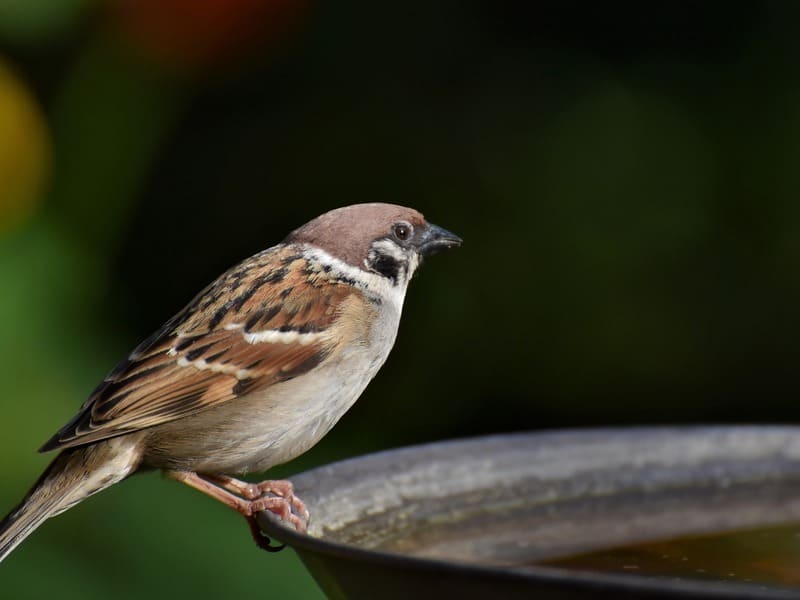
It is amazing to realize how well-adapted sparrows are to a wide range of environments and food sources. One activity commonly observed in the summer months is their appetite for grasshoppers.
It is both a delight and a surprise to many birdwatchers to witness these tiny songbirds’ aerial acrobatics as they swoop down from trees upon unsuspecting prey.
This adaptation also has its practical benefits, providing sparrows with additional protein that can aid them with growing and molting during their reproductive periods without having to depend on man-made feeders.
It’s just one more way these beautiful birds have shown us their tenacity and ingenuity throughout the millennia!
7. Bluebirds
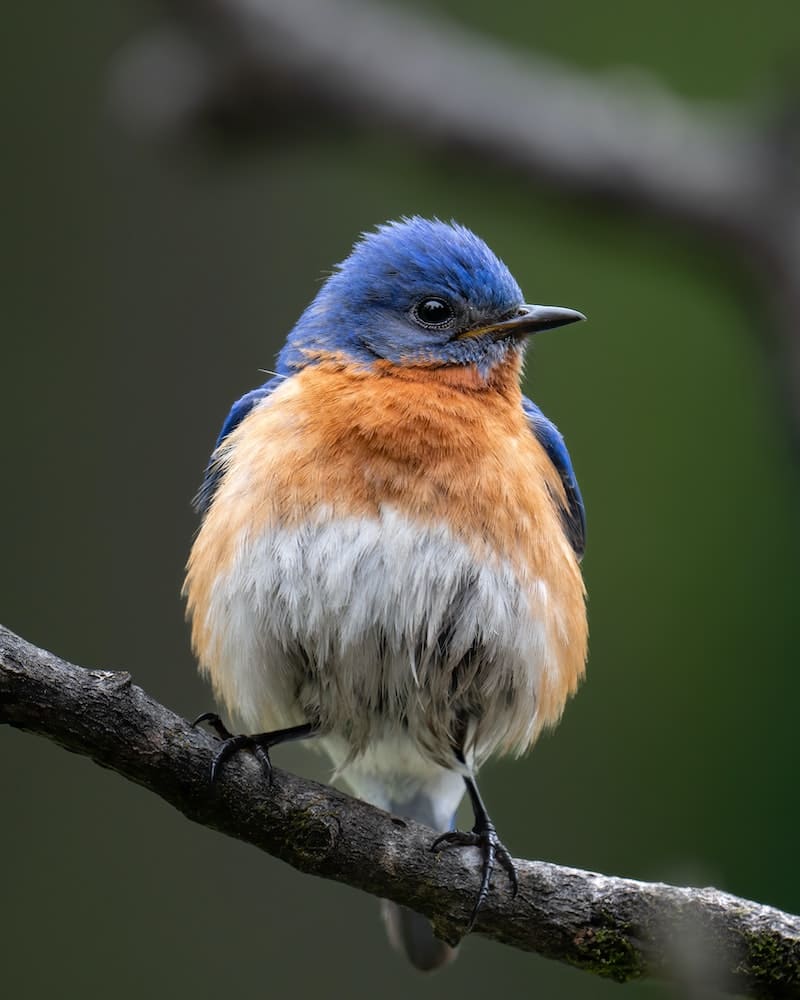
Bluebirds are beautiful birds with distinct blue feathers on their wings and tails, but they are much more than a pretty face. They survive by eating an array of different invertebrates, including grasshoppers, crickets, beetles and caterpillars.
It takes skill to be able to catch grasshoppers zooming around in the air or trudging through the grass, but these birds have it down!
In the warmer months, however, these birds may switch to a more protein-rich diet as prey abundance increases.
While we don’t usually like seeing grasshoppers skitter around our yards we can at least take comfort in knowing that bluebirds are controlling their populations.
8. European Starling
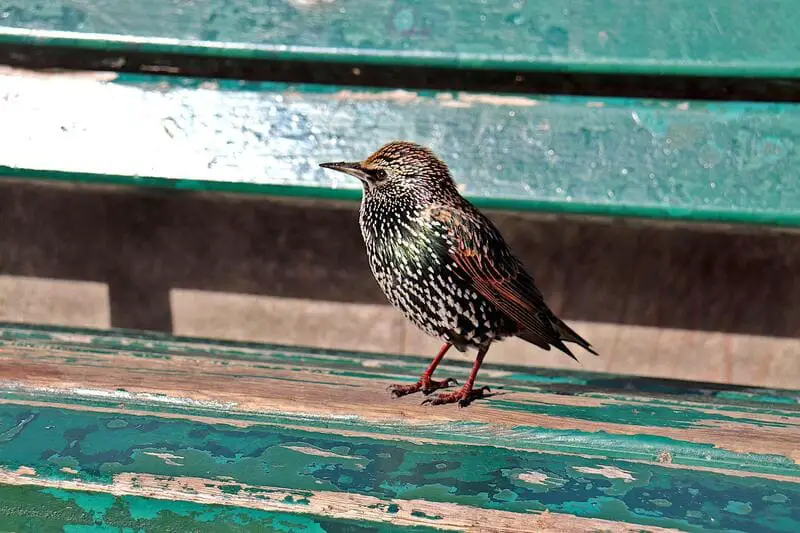
The European Starling is a very versatile bird when it comes to its diet. They’ll not only eat small amounts of fruit, grains, and insects but will also gladly feast on grasshoppers.
Not only do grasshoppers provide a good source of protein, but the starling has a relatively long digestive tract, allowing them to extract the maximum amount of nutrition from various food sources.
This ability gives them an advantage in many habitats where other species may struggle to survive due to a lack of sustainable nutrition options.
It’s yet another testament to why the European Starling is so successful in so many different places around the world. Their adaptability is second to none.
9. Orioles
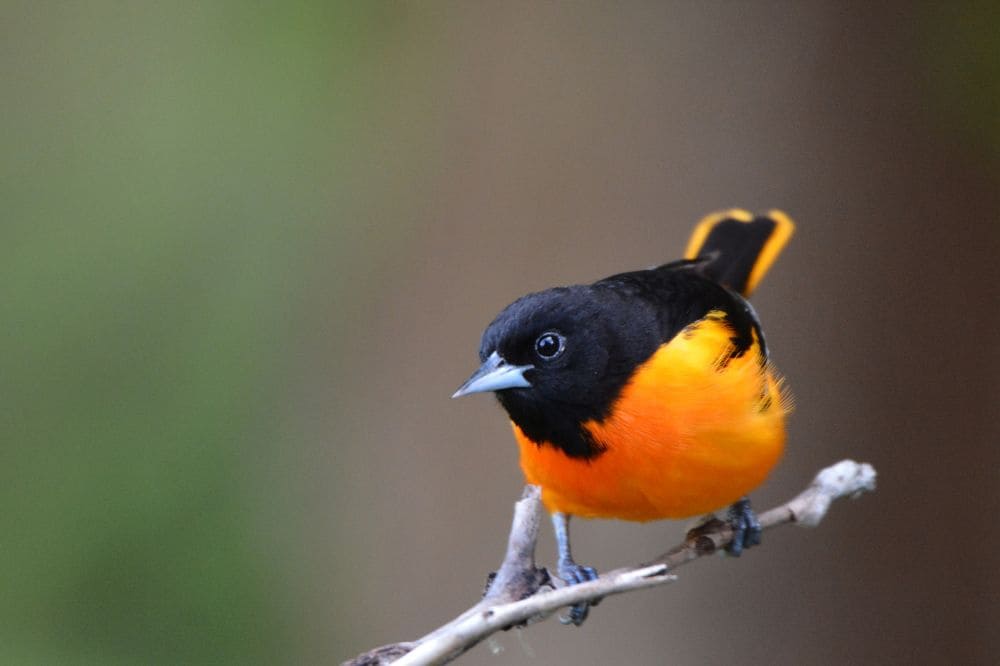
The insect kingdom isn’t just a source of annoyance to gardeners and picnickers. It’s also an important food resource for some species.
Such is the case with the Baltimore oriole, a type of migratory songbird found throughout much of central North America.
Although they eat insects, fruit and nectar in summer, grasshoppers rise to the top of their menu when they’re found.
In fact, studies have shown that at least one-third of their overall diet during that season consists exclusively of this particular insect!
Given their preference, it seems as though researchers should focus more on ways to protect grasshopper populations if they want to ensure thriving numbers of Baltimore orioles.
10. Gray Catbird
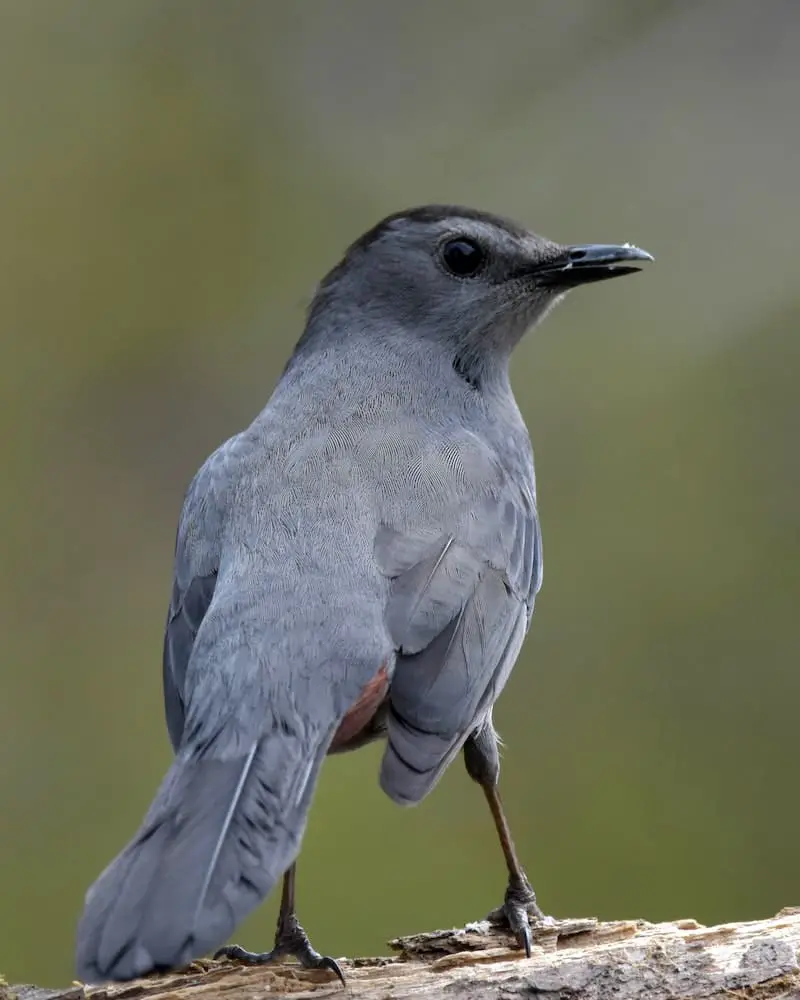
The Gray Catbird is an interesting bird that can often be found in or near wet, marshy areas with thick vegetation. What’s particularly fascinating about this species is their diet. They love to munch on grasshoppers!
This tasty snack has earned them a surprising nickname: “Grasshopper Bird”. They may also eat beetles, caterpillars, and other large insects, but grasshoppers are definitely their favorite meal.
So if you’re ever out in a marshy area and hear a loud, melodious call echoing through the trees, chances are it’s coming from one of these delightful feathered friends snacking on their favorite treat.
11. Barn Swallow
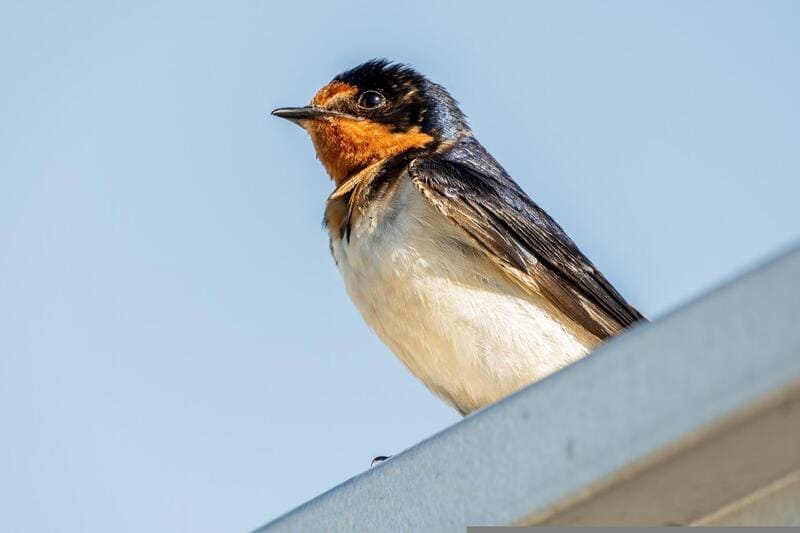
Barn swallows are one of the few birds that consume insect prey, such as grasshoppers. They hunt in pursuit of their food, and when they come across a grasshopper, they snatch it from mid-air with their talons.
Barn swallows don’t just fly around waiting for meals; they devote their energy and time to tracking down their prey.
Though barn swallows mainly feed on flying insects such as flies, wasps, and bees, they will occasionally consume a grasshopper or two to gain an extra protein boost during the mating season.
What’s fascinating is that these birds can adapt and adjust to life in an array of habitats ranging from rural farms and towns to urban cities, all while continuing to enjoy their favorite snack, the delicious grasshopper!
What Time of Year Are Backyard Birds Most Likely to Eat Grasshoppers?
Backyard birds seem especially attracted to grasshoppers during summer and early fall time; this makes sense since grasshoppers are abundant around these times of the year.
During the summer, hoppers have matured and become larger than other stages in their maturation process which make them ideal for hungry birds looking for food.
The heat encourages them to move around more and take refuge in the shade of plants and trees near bird feeders, where they become easy targets.
Grasshoppers remain an important food source until fall, when they shrink considerably in size due to cooler temperatures.
Consequently, food options available to backyard birds also shift accordingly, supplementing grasshoppers with other sources such as fruits, nuts, and insects.
How to Attract Insect-eating Birds to Your Backyard
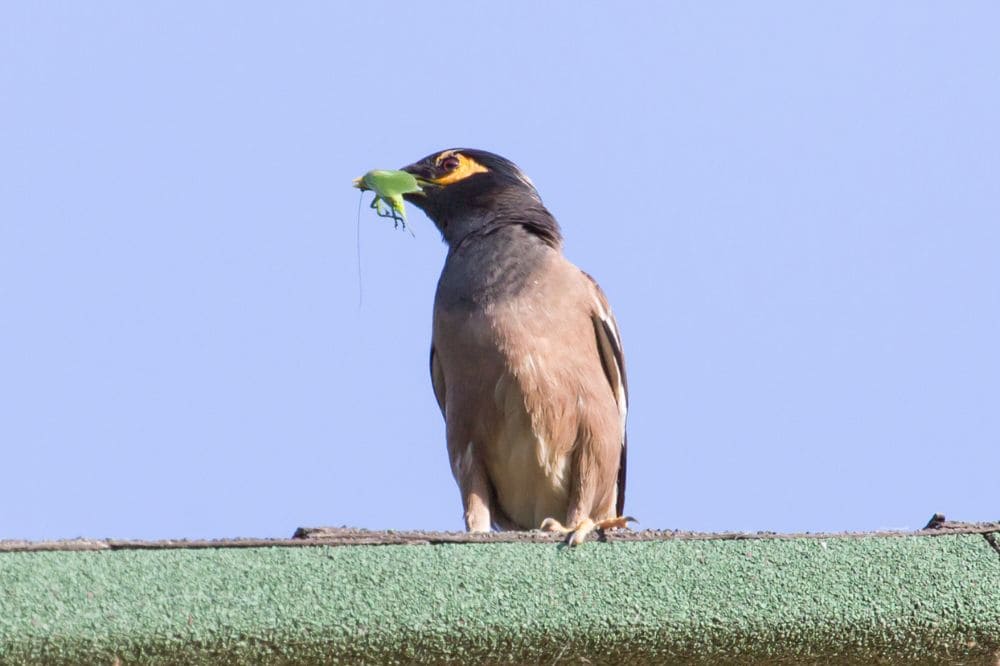
If you want to attract insect-eating birds to your backyard, there are a few easy steps you can take.
First, avoid using chemical-based pesticides and herbicides in your garden; these will drive away the smallest birds as well as insects. Secondly, provide plenty of water for drinking and for bathing.
If possible, set up a shallow wading pool other than the bird bath; many species prefer this kind of shallow water. Thirdly, supply food sources that cater to insect eaters, such as sunflower seeds.
Lastly, provide nesting boxes, so the birds have an attractive place to nest when they arrive. With these steps taken and with time, you should soon see your backyard full of colorful feathered friends rewarding you with their chirps and songs.
Water source:
Adding a source of water to your backyard is a great way to attract insect-eating birds. Not only will this provide a habitat for the birds, but also it will be an excellent resource as they hunt for their food.
Moreover, a water source can be a lovely addition to your garden, increasing beauty and life without much effort on behalf of the homeowner.
In order to make the most out of this addition, the owner should ensure the water is fresh and of good quality.
This can be accomplished by regularly cleaning out debris from bird baths and ponds, keeping trash away from swimming areas, and using bird-friendly plants in the area, like catmints or shrub roses, as shelter to munch on pests.
Providing clean water in your backyard will ensure that bug-eating birds receive plenty of nutrients without compromising their health or well-being.
Bird feeders:
Attracting birds to your backyard can be both educational and entertaining, not to mention a great way to enjoy nature in the comfort of your home.
Bird feeders are one of the most effective methods for bringing more feathered friends into your yard.
As an added bonus, many insect-eating birds are especially drawn to bird feeders; species such as flycatchers, swallows, warblers, and shrikes all feed almost exclusively on bugs!
When purchasing or creating a bird feeder, make sure it’s located near other natural sources of food, such as shrubs, trees, or water in order to attract a wide variety of birds. There is no better sound than that of chirping birds accompanying you through the day.
Frequently Asked Questions
In the world of avian consumption, birds eating grasshoppers is an interesting topic. There are many species of birds that make regular meals out of grasshoppers and other insects.
In fact, 90% of some species’ diets are insects! Many people ask: What do birds do when they encounter a large group or flock of grasshoppers?
Well, their behavior can vary depending on their experience with hunting small prey. Typically, they will stake out one or two large grasshoppers to feed upon before quickly searching for more food in the area while they process what they have eaten.
Also, many people wonder if it is dangerous for birds to eat such bugs. Fortunately, grasshoppers are not poisonous and provide vital protein to ensure a healthy diet for birds.
Do finches eat grasshoppers?
Finches are highly adaptable birds, capable of consuming a wide variety of foods. Many finches frequently enjoy a diverse seed diet, while some finches also have the ability to hunt and catch insects, including grasshoppers.
In fact, in areas where grasshoppers are abundant, nectar-eaters such as Blue-faced Honeyeaters, Firetails, and Red Wattlebirds routinely include grasshoppers in their daily diets.
However, in certain geographic regions, finches may prefer other insects over grasshoppers as sources of protein.
Therefore, it is not clear if all finches consume grasshoppers as part of their regular diet but given the culinary preferences of many species, it certainly appears plausible.
Why do birds eat grasshoppers?
Birds eat a variety of things, but one of their favorite sources of nutrition is grasshoppers. It has been theorized that the nutrient-rich composition of grasshoppers is especially beneficial for birds’ development and fuel for long migrations.
The abundance of grasshoppers in certain locations makes them a plentiful food source and an important item in most bird species’ diets.
Furthermore, because they can be found everywhere, from deep forests to open fields, they make it easy for birds to find the exact sustenance they need at any given time.
As such, the availability of this food is likely why birds are so heavily attracted to grasshoppers.
Do woodpeckers eat grasshoppers?
The answer is yes! Woodpeckers not only prefer to dine on beetle larvae and other insects found in the bark of trees but also forage for food on the ground, sometimes seeking out juicy grasshoppers.
While these feathered friends are masterful climbers and noted insectivores, they do sometimes venture down from their arboreal abodes to search for small trees or shrubs where they can find a variety of snacks.
For example, juniper bushes often have heaps of tasty grasshoppers clinging to the branches, perfect pickings for hungry woodpeckers.
Do owls eat grasshoppers?
Owls are efficient predators, tactically designed to devour their prey. They have a sharp sense of sight and an extraordinary hearing ability which helps them identify their target and swoop down for the kill.
Owls have been known to feed on various species of animals, small or large, including rodents, insects, reptiles, small birds, and fish.
So do owls eat grasshoppers? Yes! Grasshoppers are a primary food source for many types of owls because they offer high-protein content and are easier to capture due to their large size and stationery habits.
Even though grasshoppers form part of the diet of owls, they also get meat from other sources like mice and beetles when it comes to filling up nutrients.
Do hawks eat grasshoppers?
Hawks are skilled hunters, and their diet is often rich in animal proteins like small rodents and insects. In fact, they especially love to feast on grasshoppers!
Not just any species of a hawk will eat grasshoppers, however; most notably those found in the Accipiter genus, like Cooper’s hawks, Sharp-shinned hawks, and Northern goshawks.
These hawk species need a lot of energy to maintain their hunting speed and agility while flying. Eating grasshoppers provides them with the necessary nutritious food source that helps them accomplish this.
What Time of Year Are Backyard Birds Most Likely to Eat Grasshoppers?
During the warm months of the summer, backyard birds are most likely to indulge in tasty grasshoppers. As temperatures start to rise, grasshoppers emerge from their winter hiding spots and become a tempting meal for feathered friends flying by.
In fact, birds of all kinds, such as sparrows, robins, jays, ducks and crows, often feast upon these crunchy insects throughout the summertime!
With an abundance of hoppers during this period of warmer weather, backyard birds find that it is a great time to fill their bellies with this insect-based snack.
So if you’re looking to attract more avian visitors to your yard or garden, offering up a diet rich in grasshoppers can be the perfect way to do it.
Final words
Based on the research, it appears that some birds are more likely to eat grasshoppers than others. The most common predators of grasshoppers are typically small birds, such as sparrows and finches.
By understanding what kinds of birds are predators of grasshoppers, farmers can take steps to protect their crops from being eaten by these pests.
You will also like to read:

